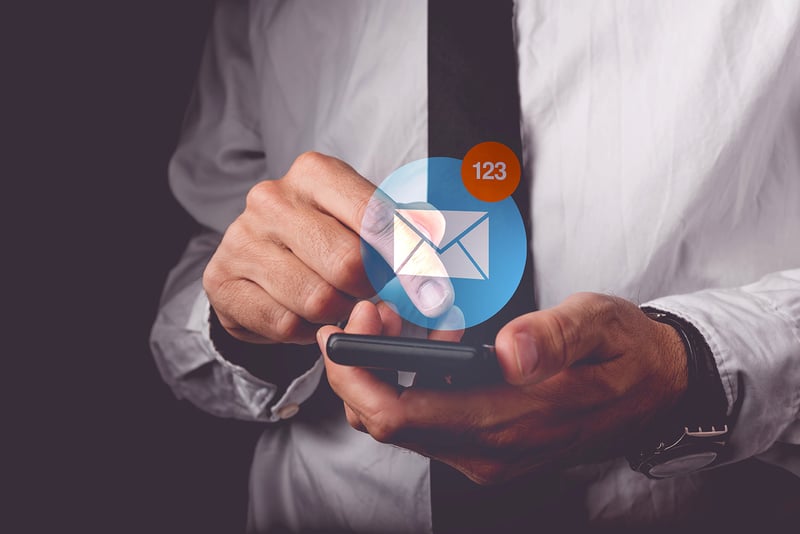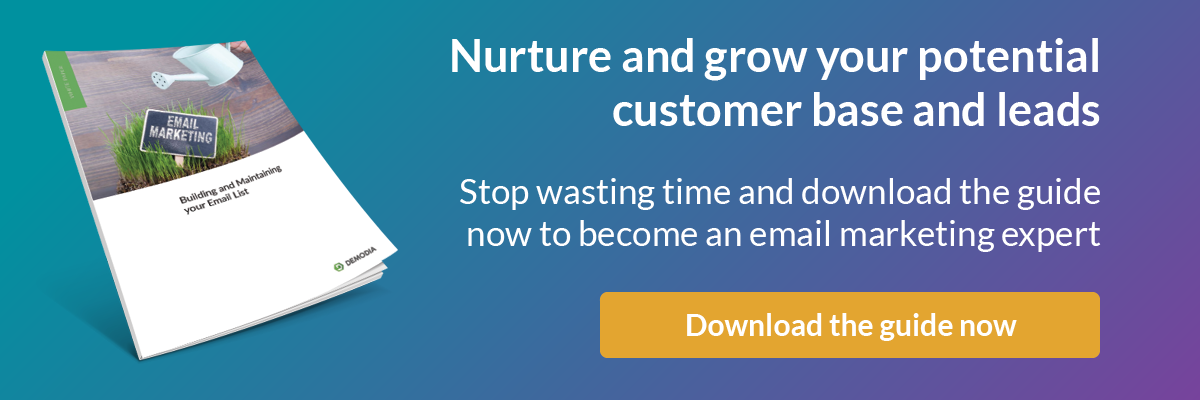
Digital marketing platforms are very fond of talking about CTRs, CDNs, Geo-targeting, Alt-text, and bounce rates - but most people don’t even know what they mean. Failing to understand this terminology can hinder your marketing efforts - especially when it comes to email marketing, where these terms crop up all the time. Truthfully, we can’t blame you if you don’t understand every single one. It’s confusing to keep track of everything when all you want is to send an email marketing campaign, track the results and make it more effective next time.
If you’re feeling confused about all the acronyms, terminology, and buzzwords - don’t panic. We’re here to help you understand them and how they fit into your email marketing campaign. Once you understand the basic terms, you’ll go from being confused and lost to understand how your emails perform and how to make them better with every send.
Let’s outline the terminology of email marketing to get started.
Email Marketing Terminology
A
A/B testing – a method used to test the results between two different emails to find the best results.
Acceptable Spam Report Rate - The rate at which your emails can be reported as SPAM without harming your sender reputation.
Acceptance Rate - The percentage of email messages that are accepted by the mail server.
Above the fold – the section of an email or webpage that is visible without scrolling.
Affiliate marketing – revenue sharing where compensation is based on performance metrics such as clicks, registrations, sales or a combination of the three. Usually, compensation is shared between online advertisers and online publishers.
ALT text – HTML attribute that provides alternative text when images fail to load in an email.
Autoresponder – a program that sends an automatic response to incoming emails.
B
B2B – a business that sells products or services to other businesses.
B2C – a business that sells products or services to the end-users or consumers.
Blacklist - A list that denotes IP addresses as spammer IPs, impeding email deliverability.
Bounce rate – the percentage of emails in a campaign that is undeliverable.
C
Call to action (CTA) – the part of a marketing message that attempts to persuade a person to perform the desired action.
Click-through – the process of clicking on a CTA leading to the intended destination.
Click-through rate (CTR) – The average number of click-throughs per hundred impressions, expressed as a percentage.
Cookie – preference information stored on a user’s computer from a website or email for the user’s convenience, and for marketers to personalise content to a greater degree.
Conversion Rate - The percentage of recipients who respond to your call-to-action in an email marketing campaign or promotion.
CPM (Cost Per Thousand) - In email marketing, CPM commonly refers to the cost per 1000 names on a given rental list.
D
Dedicated IP - refers to an IP address from which only you can send email.
Double Opt-In - an opt-in method that requires subscribers to confirm their consent by clicking a link in a confirmation email or responding to the confirmation email in some other way.
Deliverability - refers to the potential to which an email will get delivered effectively.
E
Email marketing – the promotion of products or services via email.
Email spam – unwanted, unsolicited email, often penalised legally.
G
Geo-targeting – detecting a reader’s location to serve email content or advertisements relative to the location in question.
GDPR - legislation governing the European zone protecting customers from unwanted marketing communications.
H
Hard Bounce - refers to the failed delivery of an email due to a permanent reason like a non-existent, invalid, or blocked email address.
Honey Pot - a planted email address by organisations trying to combat spam that. If you deliver consistently to this email address, you’ll be identified as a spammer.
HTML email – email that is formatted using HTML instead of the standard markup text.
I
Inbound link – a link from a site outside of your site.
M
Marketing automation – the use of software to automate repetitive tasks related to marketing activities, including email marketing.
O
Open rate – the percentage of recipients who open your email.
Opt-in email – email that the recipient has explicitly given permission to receive.
Opt-out – the action a potential email recipient takes to indicate that they no longer wish to receive marketing communications.
P
Personalisation – adding customisable elements to your email based on information you already know about recipients. It could refer to addressing the recipient by name, referencing past purchases, or other content unique to each recipient.
Plain Text Email - An email sent without HTML. This enables better readability, but a less attractive looking email.
S
SMTP - standing for Simple Mail Transfer Protocol, it is the standard communication protocol for emails.
Soft Bounce - a soft bounce is the failed delivery of an email due to a temporary issue, like a full mailbox or an unavailable server.
SPF - the 'Sender Policy Framework'- is a DNS record that says an IP or domain sends email on whose behalf.
w
Whitelist - Instead of listing IP addresses to block, a whitelist includes IP addresses that have been approved to deliver an email to a recipient.
Use your knowledge
Understanding the various terms and how they fit into your email marketing is just the first step towards getting the most out of digital marketing. You have to apply each concept in practice to see how they really work and add to your marketing.
Getting the right partner is the first step toward effective digital marketing. It saves you time, money, and frustration and lets you find success even without deep knowledge in setting up online campaigns. We know how important digital marketing is today, and how confusing it can be to those who don’t have the experience to apply it. As a small company ourselves, we’ve gone through this process ourselves and found a way to succeed. That’s why we’ve spent the last 12 years planning and implementing award-winning digital marketing campaigns for B2B clients worldwide.
Contact us for a quick 30-minute meeting and we will present you with a digital marketing campaign plan with the right messages, channels, audience, and content to use, to assure your success online.



